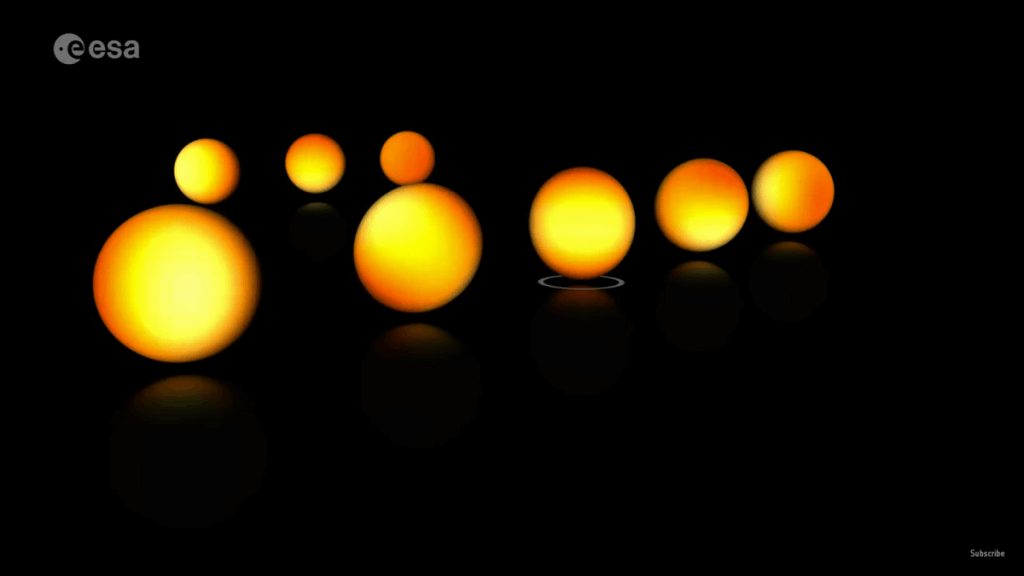Europe’s galaxy-mapping Gaia mission recorded the sound of starquakes that ripple through stellar surfaces like tsunamis and change stars’ shape in a way that can be detected from space around Earth.
The recording — which is featured in a new video from the Gaia mission team — is not the exact sound emitted by the stars, however. It’s what scientists call a sonification, a translation of data into sounds, and the team behind the project had to do quite a lot of processing to make the experience available to humans.
“Human beings cannot hear the true frequencies of these oscillation modes,” Conny Aerts, an astronomer at the Catholic University of Leuven in Belgium, said in a European Space Agency (ESA) press conference on Monday, (June 13). “We artificially multiplied them by a big factor of 8.6 million to bring them into the audible range of [human] ears.”
Related: 4 big Milky Way mysteries the Gaia mission data dump may solve
The starquake sonifications were released as part of a large data dump from ESA’s Gaia mission, which measures the precise positions, distances from Earth, speeds and trajectories of 2 billion stars in our home galaxy, the Milky Way. The telescope, in orbit since 2013, is known for creating the most detailed map of the Milky Way, and the detection of the starquakes was rather a bonus, Aerts said.
Gaia also measures the brightness levels of stars, and it was in this data that the starquakes were found.
“These vibrations make the stellar gas move up and down,” Aerts said. “And it changes the brightness of the star as a function of time. So it makes the stars blink in the sky.”
Previously, Gaia was able to detect swelling and shrinking of stars, but spotting these starquakes is more challenging, ESA said in a statement (opens in new tab). The starquakes, which propagate through the star’s surface like a giant wave, cause the surface to move while it rotates. Studying these stellar tremors could enable astronomers to better understand what is happening inside stars, astronomers said.
“Blinking stars do offer astronomers a very powerful tool to study their internal physics and chemistry,” said Aerts. “It’s like earthquakes on Earth. Seismologists love earthquakes, if they’re not too violent, because these allow us to understand what is happening inside our planet. And astroseismologists actually do the same, but for stars.”
The latest Gaia release, the biggest catalog of information about stars in the Milky Way galaxy ever compiled, contains information about thousands of such blinking stars.
Gaia’s data, however, isn’t detailed enough to crack open the secrets of stellar interiors on its own. Instead, astronomers can use Gaia’s measurements to look for promising targets, which they could subsequently observe in greater detail with other telescopes.
Specialized telescopes for studying exoplanets, such as NASA’s TESS mission or ESA’s upcoming PLATO, are ideal for analyzing starquakes, Aerts said, and together with Gaia can open a new “gold mine of astroseismology” that will reveal what makes these stars tick, or rather blink and vibrate.
Follow Tereza Pultarova on Twitter @TerezaPultarova. Follow us on Twitter @Spacedotcom and on Facebook.


